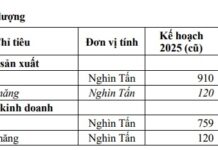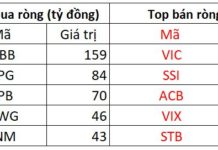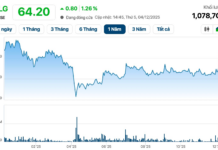
|
Deposit interest rate hikes become more widespread but remain reasonable. (Photo: Vietnam+)
|
While the banking system continues to enjoy a surplus in liquidity, and credit demand remains weak, a wave of deposit interest rate increases has quietly swept through many commercial banks. However, experts believe that these hikes will not affect lending rates for the remainder of the year.
Diverging Deposit Rates
On July 22, BIDV adjusted its online savings interest rates upward while keeping over-the-counter deposit rates unchanged. As a result, customers who deposited money online for terms ranging from 6 to 11 months received an additional 0.3% interest, bringing the total to 3.3% annually. For terms ranging from 24 to 36 months, the interest rate was increased by 0.2% compared to over-the-counter deposits, reaching 4.9% per year.
With these adjustments, BIDV remains the second-highest interest rate payer among the Big 4 banks. VietinBank still offers the highest interest rate of 5% per year for online deposits, while Vietcombank and Agribank advertise a maximum rate of 4.7% per year. Notably, for the 12-month term, whether deposited online or at the counter, all four major banks have maintained a rate of 4.6%-4.7% per year, unchanged over the past three months.

|
BIDV has decided to raise deposit interest rates slightly by 0.3% per year. (Photo: Vietnam+)
|
After reaching historic lows, deposit interest rates began to climb back up in late March and continued to rise across the board in April, May, and June. In early July, 15 banks adjusted their deposit interest rates upward, including VietBank, MB, BVBank, KienLong Bank, NCB, Eximbank, SeABank, VIB, BaoViet Bank, Saigonbank, VPBank, PVCombank, PGBank, Sacombank, and BIDV.
In a recently published study, UOB Vietnam Bank stated that since the beginning of the second quarter of this year, the interest rate for VND has been on the rise, and by mid-year, deposit interest rates for VND offered by banks had increased by approximately 0.5%-1% per year for various terms.
According to Dinh Duc Quang, Director of the Monetary Business Division at UOB Vietnam Bank, commercial interest rates (those for deposits from individuals and businesses, the interbank market, etc.) are being adjusted to better reflect the capital supply and demand dynamics in the market, relative to USD interest rates globally, and in comparison to investment yields from other channels such as stocks, real estate, and precious metals.
Economist Le Xuan Nghia shared that the slight increase in savings interest rates over the past period is reasonable, helping to balance the interests of all parties involved and retain depositors. For the banking system, the most important task at present is to maintain stable administered interest rates and keep lending rates low to support economic recovery.
In reality, despite the rebound from historic lows, deposit interest rates are still not attractive to savers. According to recently released data from the State Bank of Vietnam, total deposits from both individual and institutional customers at credit institutions reached 13,420,000 billion VND as of the end of April, a 0.9% increase compared to the previous month, equivalent to approximately 140,000 billion VND. This represents a 0.4% increase, or 50,000 billion VND, compared to the end of 2023.
Thus, credit institution deposit balances have officially set a new record after experiencing negative growth compared to the end of 2023 in the first three months of this year. In particular, individual customer deposits have reached nearly 6,720,000 billion VND, a 2.8% increase from the beginning of the year, setting a new record. In April 2024 alone, individual deposits increased by approximately 40,000 billion VND.
Experts also noted that the trend of increasing deposit interest rates is entirely consistent with the dynamics of the money market, as the demand for loans from commercial banks has also shown signs of recovery since March. Specifically, after two months of negative growth at the beginning of the year, credit growth rebounded strongly from March to June. Notably, the general direction of the banking sector is to continue implementing measures to promote credit growth in the remaining months of the year.
What About Lending Rates?
Some organizations predict that deposit interest rates will inch up but not surge significantly by the end of the year.
UOB Bank leaders forecast that VND deposit interest rates may continue to rise slightly by 0.25-0.75% from now until the end of the year, creating a harmonious yield curve for terms ranging from 1 month to 12 months, with rates ranging from 3% to 6%. This is considered a reasonable level given the stable macroeconomic conditions, inflation being kept under control at around 4%, and the USD/VND exchange rate expected to fluctuate within a 4%-5% range in 2024.
Experts from KBSV Securities Company (KBSV) also predicted that savings interest rates would increase by an additional 0.5% from now until the end of the year, reaching levels similar to those during the COVID-19 bottom in 2020-2021.
In light of this situation, KBSV also provided a forecast for lending rates in the remaining two quarters of the year. According to the organization, as funding costs rise, and lending rates have already hit rock bottom, they are likely to remain flat or increase slightly by year-end. The specific increase will depend on individual banks. State-owned banks, due to their role in supporting the economy, will maintain relatively low lending rates, while private banks may raise interest rates to adjust for the increase in their cost of funds.

|
Experts predict that lending rates will not undergo significant changes. (Photo: Vietnam+)
|
Meanwhile, addressing concerns about potential increases in lending rates in the coming period, a leader from the Big 4 banks shared their perspective. The State Bank of Vietnam has been selling USD to intervene in the exchange rate, which means it has absorbed a portion of the VND in the system. At the same time, the State Bank continues to absorb VND through the issuance of bills. This indicates that liquidity in the system is not showing signs of tension.
Additionally, credit demand remains weak, so there is no reason for commercial banks to engage in a race to increase deposit interest rates to attract idle funds from the people.
By observing the way many banks adjust their interest rates, it can be seen that they only increase rates significantly for terms with fewer depositors, such as 4, 5, 7, 8, 9, 10, and 11 months, but only make slight increases for key terms (6 and 12 months).
Therefore, according to this leader’s perspective, lending rates will not undergo significant changes compared to before.
Sharing the same view, Phan Thi Thu Hang, Head of the Investment Advisory Division at VPS Securities Company, stated that while interest rates have recently increased, they are still lower than pre-COVID-19 levels. As a result, the interest rate dynamics are not expected to significantly impact other asset classes, including the stock market.
Thuy Ha
Banking: Huge Profits Yet Worried
Several banks have announced their 2023 financial results, showing outstanding growth. However, they are also facing increased pressure in setting aside provisions for credit risk.
Fighting Cross-Ownership: Impossible to “Take Tangibles to Treat Intangibles”
The recent amendment to the Credit Institutions Act, passed by the National Assembly during an extraordinary session, has introduced several measures to address cross-ownership, manipulation, and domination of credit institutions. However, it is challenging to “make the intangible tangible”! To prevent cross-ownership, it is crucial to enhance the effectiveness of inspections and supervision.







































